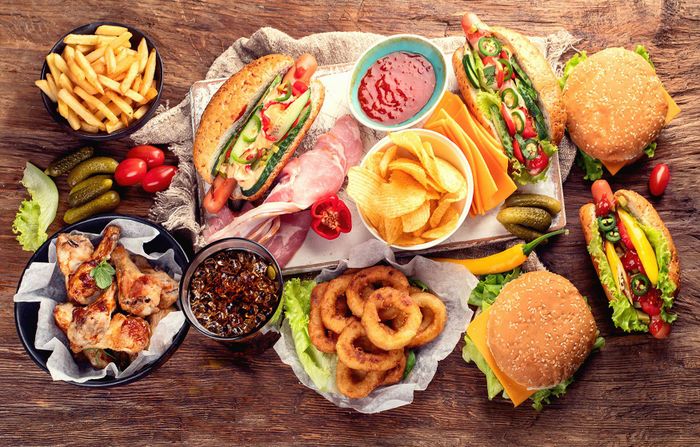Fast food is a type of mass-produced food designed for commercial resale and with a strong priority placed on "speed of service" versus other relevant factors involved in culinary science. Fast food was created as a commercial strategy to accommodate the larger numbers of busy commuters, travelers and wage workers who often did not have the time to sit down at a public house or diner and wait for their meal. By making the speed of service the priority, this ensured that customers with strictly limited time (a commuter stopping to procure dinner to bring home to their family, for example, or an hourly laborer on a short lunch break) were not inconvenienced by waiting for their food to be cooked on-the-spot (as is expected from a traditional "sit down" restaurant). In 2018, the fast food industry was worth an estimated $570 billion globally.
The fastest form of "fast food" consists of pre-cooked meals kept in readiness for a customer's arrival (Boston Market rotisserie chicken, Little Caesars pizza, etc.), with waiting time reduced to mere seconds. Other fast food outlets, primarily the hamburger outlets (McDonald's, Burger King, etc.) use mass-produced pre-prepared ingredients (bagged buns and condiments, frozen beef patties, vegetables which are prewashed, pre-sliced, or both; etc.) but the hamburgers and french fries are always cooked fresh (or at least relatively recently) and assembled "to order" (like at a diner).
Although a wide variety of food can be "cooked fast", "fast food" is a commercial term-limited to food sold in a restaurant or store with frozen, preheated, or precooked ingredients and served to the customer in a packaged form for take-out/take-away.
Fast food restaurants are traditionally distinguished by their ability to serve food via a drive-through. Outlets may be stands or kiosks, which may provide no shelter or seating, or fast food restaurants (also known as quick service restaurants). Franchise operations that are part of restaurant chains have standardized foodstuffs shipped to each restaurant from central locations.
Fast food began with the first fish and chip shops in Britain in the 1860s.[citation needed] Drive-through restaurants were first popularized in the 1950s in the United States. The term "fast food" was recognized in a dictionary by Merriam–Webster in 1951.
Eating fast food has been linked to, among other things, cardiovascular disease, colorectal cancer, obesity, high cholesterol, insulin resistance conditions and depression.Controlling for other diet and lifestyle confounders of fast food consumers often doesn't attenuate these associations and it sometimes strengthens the association between fast food consumption and mortality. Many fast foods tend to be high in saturated fat, sugar, salt and calories.
The traditional family dinner is increasingly being replaced by the consumption of takeaway fast food. As a result, the time invested on food preparation is getting lower, with an average woman in the United States spending 47 minutes per day preparing food and the average man spending 19 minutes per day in 2013.

Komentar
Posting Komentar